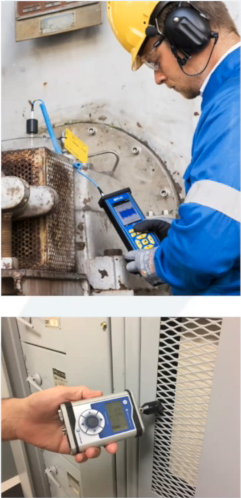Let’s talk a bit about ultrasound testing. Which testing technique is best?
It depends on what we are trying to listen to – whether the sounds are structure-borne or airborne.
We need to select the correct tool for the job. If it’s for a contact measurement, it may require a contact sensor, or a magnet or needle arrangement.
For airborne measurement, we need a parabolic dish, a flexible sensor, a long-range module, or just a typical scanning module.
There are other considerations, such as sensitivity validation and calibration. It’s best practice before you take a reading to check the sensitivity of the device to make sure it’s working properly. So at the beginning of a round, before you start collecting data, you should validate that the equipment is working properly. And then when you’re done collecting data, do it one more time as a quality-assurance check.
The functionality should be logged and documented for quality.
Calibration differs from a functional test in that it entails making sure the device is accurate. This is normally done by the manufacturer in accordance with standards.
A functional test is not a calibration, but rather it confirms the equipment was working well before you started collecting the data and after you finished collecting the data – and this is necessary for your program.
There are several manufacturers of ultrasound devices. In the image below, the first two are SDT, the next two are Fluke, the two on the bottom left are SONOTEC, and the last three are UE Systems.
How do the transducers work?
Transducers convert one form of energy to another. Simply, the vibration from the sound hits the element that creates small vibrations in the sensor material, and that is generated into electronic signal.
These are just some of the various sensors we use.




